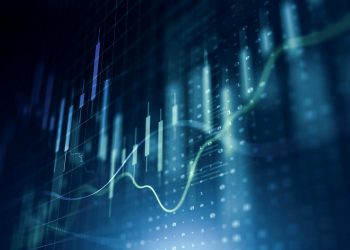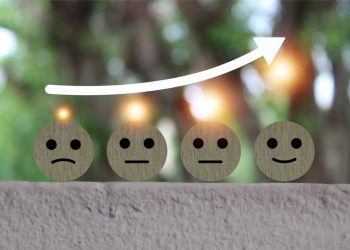 By Kara McGuire
By Kara McGuire
RISMEDIA, January 28, 2009-(MCT)-When the stock markets and housing values were soaring, certified financial planner James Bryan would plead with clients to set aside six months worth of take-home pay just in case of a job loss or a major home repair.
“I had that conversation many times during prosperous times, and often it didn’t take hold,” said Bryan, president of Bluestone Wealth Strategies in Edina, Minn. These days he doesn’t have to work as hard to persuade those same people to postpone purchases and trim spending to build that cash reserve.
Take Kalli-Ann Binkowski, for example. A year ago, she didn’t think twice about taking a trip to Ireland or financing a major purchase. But in recent months the 37-year-old science teacher from Blaine, Minn., lived with a fridge on the fritz until she saved enough cash to buy one outright. And in December, she upped her savings rate.
“I feel like I want to put more in savings, because that’s what everyone’s talking about,” she said.
Binkowski is part of a growing trend.
After years of negative or near-zero personal savings, the statistic tracked by the Bureau of Economic Analysis is soundly in the black. The reversal began when government stimulus checks designed to jumpstart the economy were saved, not spent. In November, the number measuring Americans’ personal savings as a percentage of disposable income reached 2.8% and is expected to rise throughout 2009. During the 1982 recession, the savings rate hit 11%.
Wells Fargo economist Scott Anderson expects that the savings rate will rise to 5 or 6%. His reasoning? The wealth effect, or in this case the lack-of-wealth effect. The nation’s investors and homeowners are $8 trillion poorer than we were a year ago.
According to his calculations, housing and stock market declines cost U.S. households $5.3 trillion in lost wealth in the first three quarters of 2008. Factor in the horrible fourth quarter to get to $8 trillion.
For every $1 poorer the country’s consumers are, Anderson figures they will spend 5 cents less than they did when they were feeling flush. That translates into $400 billion in lost spending annually. And despite cries that the recession will worsen if consumers don’t step up to do their part to boost gross domestic product, Anderson doubts that economic stimulus, lower fuel prices or deflation will drive consumers to the mall.
It’s back to “a ‘penny saved is a penny earned’ type philosophy,” he said. “We need debt levels to come down so that consumers can regain their footing and clean up their balance sheets. … Debt-driven consumer spending will be vilified.”
But other economists, such as Massimo Guidolin with the Federal Reserve Bank of St. Louis, are unsure whether the consumer’s mindset has shifted toward thrift.
One possibility is that they had no choice, because battered lenders are tightening standards and forcing Americans who used to rely on home equity or credit cards to change their behavior.
To be sure, economic conditions make it difficult, if not impossible, for some to increase savings, let alone save any money. Credit card, vehicle and mortgage delinquencies are rising, according to data from credit bureau TransUnion. A rising unemployment rate has idled workers such as 47-year-old Roger Hamm of Maple Grove, Minn., who said in an e-mail that he’s hoping to find work before his severance pay runs out.
“We have no short-term savings,” said Hamm, who in November lost his job as a senior product manager. “We are trying to pay off debt as fast as we can.”
Financial uncertainty is bringing more people to see Debra Harvey, a debt counselor with Thrivent Financial Bank’s Debt Savvy program. “People are scared of losing their jobs, and they don’t have the disposable income to put into a savings account,” she said. For them, the conversation turns to strategies for handling their debt load in the event of a layoff or a pay cut.
The parade of negative economic news has prompted many to cut back, even if they don’t need to. Bryan, the financial planner, is closely monitoring his cell phone spending, taking his dress shirts to the cleaners only when he has coupons, and diligently making it to the gym 12 times a month in order to receive a $20 credit from his health insurer.
“It’s a nice little allowance for staying fit and not having to buy a belt that is a size or two larger,” he joked.
Even though Binkowski’s teaching job is secure and she feels she’s faring better than some in this downturn, she has no major purchases planned and is shopping less. She used to head to Kmart or Target regularly. “It’d be like ‘What else can I buy?'” she said. Now, she’s focused on buying stocks.
The vast majority of workers are still saving for retirement. Only 4% of the 2.7 million 401(k) plan participants tracked by Hewitt Associates bagged their retirement contributions in the first 11 months of 2008. That compares with an average 3.3% who stopped annual contributions over the five prior years.
However, of the 96% of workers still investing last year, a surprising 16
percent actually increased how much they are saving from November 2007 to November 2008, surpassing the 13% of participants who decreased their deferral rates.
Increased contributions could be an attempt to make up for double-digit portfolio losses. Workers decreasing the amounts they’re investing may be doing so to ease their cash flow crunches or to sock more cash in accessible accounts.
“People are concerned about their bank accounts, not necessarily their retirement accounts right now,” said Pamela Hess, Hewitt’s director of retirement research. She projects that an additional 1 to 2% of workers will stop contributions in 2009 and that there will be a “marginal” decline in the percentage of pay that workers are ferreting away.
Hess predicts that retirement savings will take a much greater hit if unemployment rises dramatically and more companies drop 401(k) matching money.
If that happens, she said, some employees “are going to say uncle-‘I just can’t save any more!'”
© 2009, Star Tribune (Minneapolis)
Distributed by McClatchy-Tribune Information Services.










